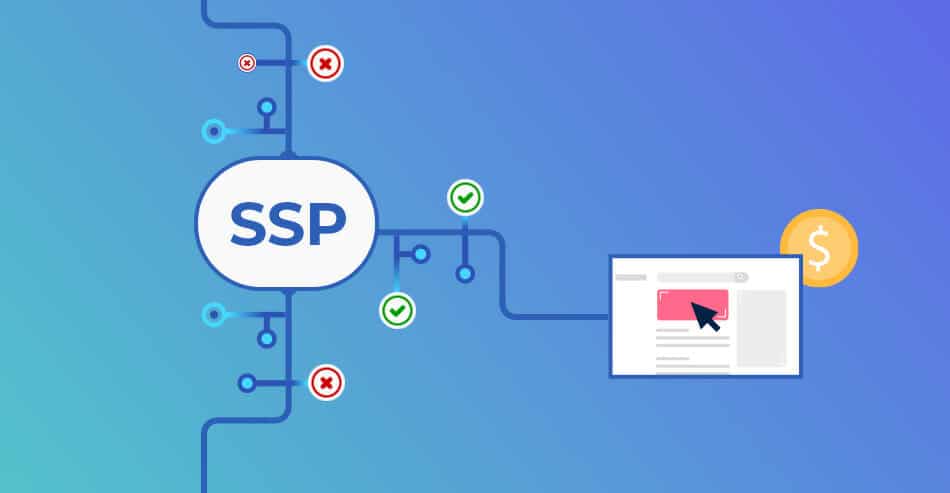The Power of Supply Side Platforms (SSPs): Enabling Efficient Ad Inventory Management
Programmatic advertising — i.e., buying and selling ads in real-time through automated systems — has become a major part of the online advertising ecosystem. It now accounts for nine out of 10 display ad dollars, and the vast majority of businesses plan to invest more in the future.
An essential component of this system is the supply-side platform (SSP), a technology publishers use to manage their ad inventory. An SSP enables publishers to increase yield and fill rate while also reducing manual processes and overhead costs associated with the sale of ads.
In this article, we’ll talk about SSPs, how they work, and how they fit into the programmatic ecosystem.
What is a Supply-Side Platform (SSP)?
Supply-side platforms (SSPs) are one part of the programmatic advertising ecosystem. They provide the technological infrastructure for publishers to manage ad inventory and enable them to make their ad space available in automated auctions.
SSPs are both similar and opposite to demand-side platforms (DSPs), which allow advertisers to bid on, buy, and optimize ads on behalf of clients. SSPs, however, are focused solely on the publisher side.
With an SSP, advertisers can:
- Connect with multiple ad buyers at once
- Set pricing and availability of ad inventory
- Control access based on advertiser type
- Optimize pricing and availability in real-time
- Analyze data to track revenue
SSPs are often integrated directly with ad exchanges, which serve as the marketplace for buyers and sellers. They’re also integrated with other technology providers, so advertisers can personalize ads for their target audience.
How Do Supply Side Platforms Work?
At its core, an SSP connects a publisher’s ad inventory with buyers in the programmatic marketplace. This integration allows for automated bidding on available impressions and dynamic pricing. It’s called “supply-side” because the ad inventory’s owner is the one using it (i.e., to sell their ad space to an advertiser).
When an impression is available, SSPs send it to ad exchanges where buyers can bid on them in real time. Prices are set according to demand, with the highest bidder receiving the impression and the publisher getting paid for it.
SSPs are most commonly used by larger publishers that need the ability to manage numerous ad impressions across multiple sites and platforms. Smaller publishers may opt for an SSP if they need help managing inventory or want to take advantage of more advanced features like targeting and optimization, but it may be more cost-effective to manage the process manually.
The Benefits of Using an SSP
Using an SSP can benefit publishers by:
- Increasing yield and fill rates. SSPs allow publishers to connect with multiple buyers at once and optimize pricing in real time, which increases the likelihood they’ll get a higher price for their ad inventory.
- Reducing manual processes. With an SSP, publishers can automate most of the process for managing inventory and selling ad space, which eliminates a lot of the painstaking work that goes into ad buying and selling.
- Increasing data visibility. SSPs provide access to detailed analytics on impressions and revenue so publishers can track performance and make more informed decisions about how to manage their inventory.
- Saving time and money in the inventory sales process. One of the best things about SSPs (and the auction-based system in general) is they eliminate the need for direct negotiations. Auctions happen in milliseconds, so publishers don’t need to dedicate staff to managing the process.
- More advertising controls. Sellers can control which types of advertisers they want to work with by specifying their IAB (Interactive Advertising Bureau) categories or setting access levels that govern which buyers can bid on their impressions. That way, they can sell ad inventory to those in industries or markets they’re comfortable working with.
Examples of SSPs
Publishers use commercial SSPs to efficiently monetize their ad inventory across multiple channels. Real-time bidding and advanced targeting features can help publishers earn the highest possible CPMs and enable advertisers to access high-quality ad inventory.
- Google Ad Manager is a popular SSP owned by Google. It’s designed to help publishers monetize their digital ad inventory effectively and use advanced targeting features to increase revenue.
- OpenX is another widely used SSP, offering customizable solutions for publishing video and display ads. The platform also offers an open-source solution allowing users to customize the technology to meet their needs.
- PubMatic is an SSP that specializes in mobile and video advertising. It offers automated tools for publishers to manage their ad inventory and sophisticated analytics and targeting capabilities so they can connect with the right buyers.
Final Thoughts
For publishers, supply-side platforms are the most critical part of the programmatic ecosystem. They make managing ad inventory easy, connecting publishers with multiple buyers and optimizing pricing for ad placement in real-time. Plus, they reduce manual processes and overhead costs associated with the sale of ads. SSPs have completely transformed the way publishers sell ad space, making it faster and easier to get the highest possible CPMs.




























